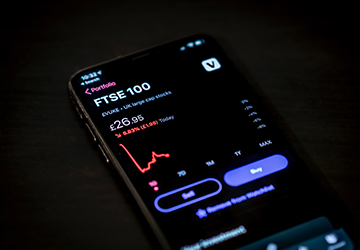How to Predict Market and Time Your Investments
Investing in the stock market and making huge profits from it can be profitable, but it also comes with many market risks. Predicting market movements and analyzing the best time to invest can minimize these risks for good returns. However, no strategy is 100% effective, but it can give you insight into your wealth. This minimizes the potential investment risk and maximizes the chances of a good return.
In this article, we will discuss various strategies that are believed to be the most effective in predicting subsequent market movements and the best time to invest. Whether you are new to the stock market or an investor, this guide will provide you with valuable insights to help you make more potential investment decisions.
Market analysis
It is important to understand how the market works in order to predict its continuous movements. There are various ways of analyzing the market, but here we will discuss three possible ways:
1. Fundamental Analysis: Throughout the research process, the company's financial and economic data are analyzed to determine its value and assets. Economic data such as the company's financial statements, GDP growth, and market trends are analyzed.
2. Technical Analysis: In technical research, market charts and patterns are analyzed to predict the future behavior of the market.
3. Sentiment Analysis: Sentiment analysis analyzes the psychology of investors to make potential investment decisions. Books, news and polls written by successful investors are used for sentiment analysis.

There is no 100% proven market analysis method, these three methods are the most effective. Regular assessment and observation of market trends can increase the chances of a good return on investment.
Timing strategies
Now that you have a good understanding of the market, it is important to predict the best time to invest. Let's talk about some strategies that will help you track the best times to invest in the market.
1. Dollar cost averaging: With this strategy, a fixed amount of money is invested regularly over a certain time interval. Investors invest regularly despite market volatility and take advantage of downturns to buy cheap stocks. This strategy mitigates the effects of market volatility and provides good long-term returns.
2. Value averaging: With value averaging, investors manage their investments based on their portfolio performance. They invest more of their money in stocks that give them better returns. When their portfolio is underperforming, they put more money into it, and expand the target when it is performing well. This means they prioritize based on their portfolio performance.
3. Market timing: With market timing strategies, investors invest by analyzing current market trends and indicators. They rely more on market performance to invest. They usually buy more shares when the market is low and sell when the market is high. This method is very profitable as it requires a deep understanding of market movements and trends.
Investors must understand that timeless strategies are 100% effective. A well-diversified portfolio and regular, disciplined investing are the most effective ways to achieve financial success in the long run. It is more effective to be consistent in the market than to be reactive.
Risk and limitations
Every approach has consequences, both good and bad. Likewise, these market analysis and timing strategies have potential risks with which investors must remain consistent. Let's understand the risks and limitations of an investment strategy through these three considerations:
1. Constraints on Forecasting and Timing: Market analysis and timing strategies help investors spot underlying disease, but they need help to correctly forecast the market. Forecasting how markets will evolve based on short-term trends can be risky and result in significant losses. Short-term market behavior cannot predict its future development. Therefore, one must focus on the long-term approach rather than short-term returns.
2. The risk of trying to time the market: Developing disease based on market trends and indicators is often considered "market timing risk." This happens when investors buy and sell stocks based on market trends and behavior. This results in higher transaction costs and lower returns.
3. The importance of diversification and long-term investing: Portfolio diversification is considered the best long-term investing method. This is the most effective way to reduce risk and maximize future returns. Investors can minimize the impact of market volatility by investing in a variety of stocks, bonds and assets. This is the most sustainable way to generate long-term returns.

Successful investors cannot generate good returns during periods of market volatility, but can diversify their portfolios for long-term returns. Investors do not analyze the current state of the market, but can predict future positions based on current parameters. Therefore, it is important to focus on the long-term approach rather than short-term returns.
Successful forecasting requires a combination of market and timing strategies, also known as strategic investing.
Use these strategies to track market trends and indicators to predict the future of the strategic investment market. Remember, not all systems are 100% efficient. It is best to analyze the positive and negative consequences before investing.
Related Article
8 Best Investments in 2023


